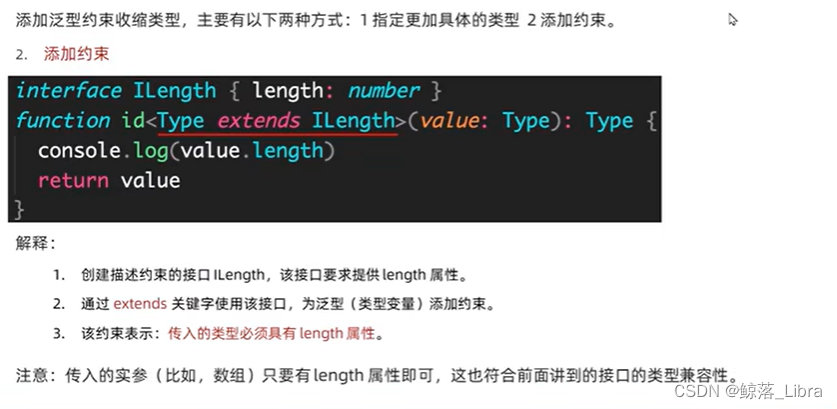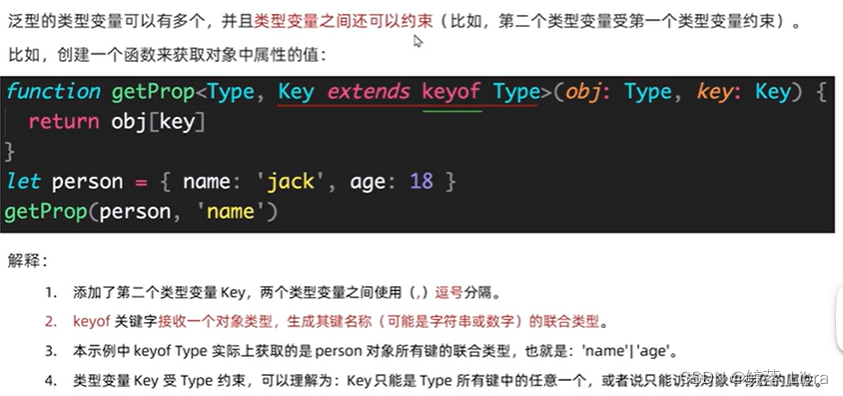上一节拉下的typeof
// typeof可以在类型上下文中引用变量或类型
let p = { x: 1, y: 2}
function formatPoint(point: typeof p){}1.class
(1)
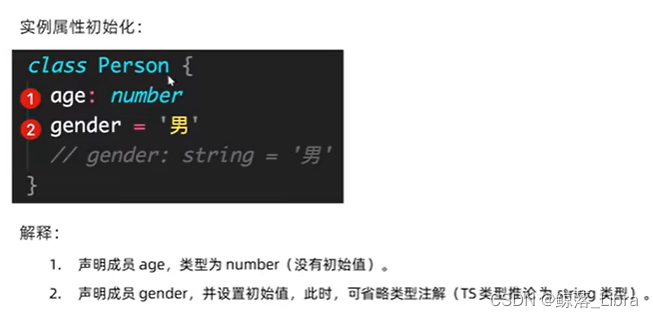
(2)class的构造函数没有返回值,不能为其指定返回值
class person {
name:string
age:number
constructor(name: string, age: number){
this.name = name
this.age = age
}
}
//构造函数里的this指向实例对象
let p1 = new person('zs', 18)(3)class的实例方法
class point {
x=10
y=10
scalc(n: number) {
this.x *= n
this.y *= n
}
}
let p1 = new point() //因为没有写构造函数,所以参数不写
p1.scalc(10)
console.log(p1)(4)类继承extends(类与类)
// 类继承extends
class animal{
move(){
console.log('走两步')
}
}
class dog extends animal {
name="二哈"
say(){
console.log('汪汪')
}
}
const dog1 = new dog()
dog1.move()
dog1.say()(5)实现接口(类与接口之间)
// 实现接口(类与接口)
// 类必须要实现接口里所有的属性和方法
interface sing {
say(): void
}
class singer implements sing {
say(): void {
console.log('小苹果')
}
}
const singer1 = new singer()
singer1.say()(6)class可见修饰符
protected只在类中或子类中可用,在实例化对象中不可用
private只在当前类中可用,在子类和实例化对象中都不可用
扫描二维码关注公众号,回复:
17027938 查看本文章


(7)只读修饰符readonly
只能修饰属性,不能修饰方法,readonly修饰的属性只能在构造函数中修改,其他地方都不能修改
![]()

2.类型兼容性
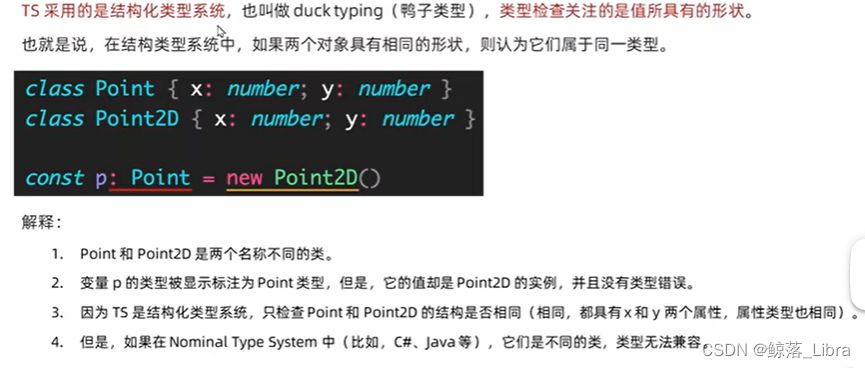
![]()
(2)接口之间兼容性(多的赋值给少的)
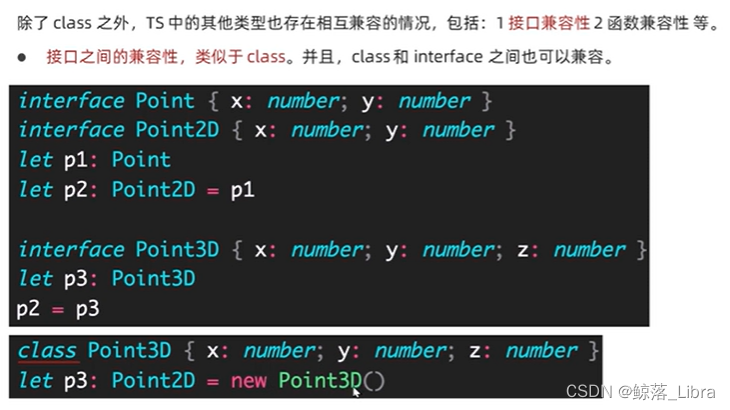
(3)函数兼容性
①参数个数
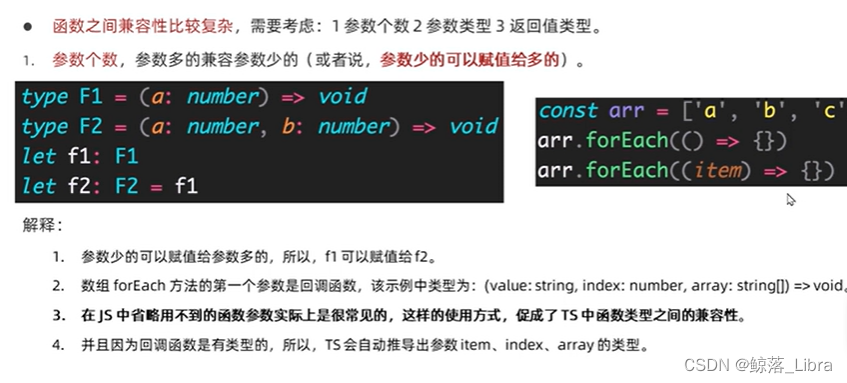
②参数类型
统一位置的参数类型要相同,(少的可以赋值给多的)
③返回值类型

3交叉类型&
interface person {
name: string
}
interface contant {
phone: string
}
type personDetail = person & contant
let person1: personDetail = {
name: 'zs',
phone: '11111'
}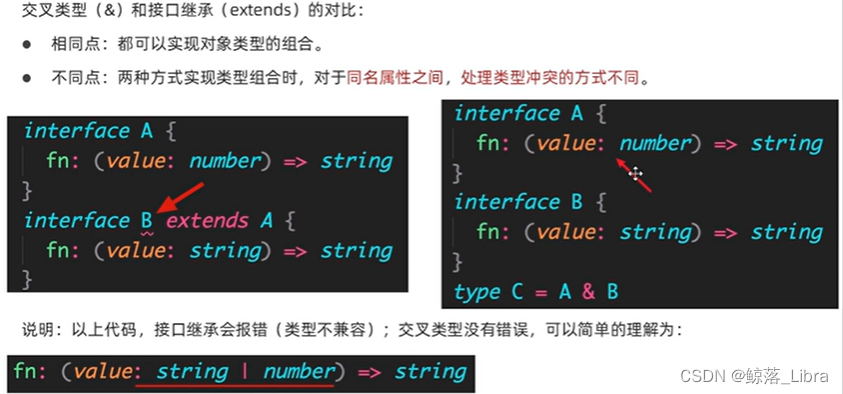
4泛型
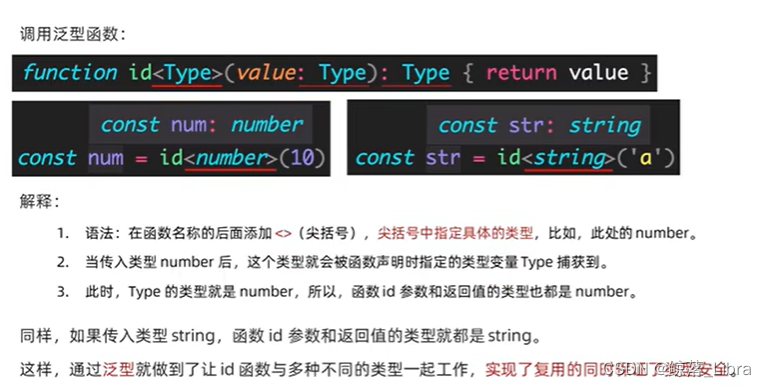
简化是手动传入的类型可以省略不写
泛型约束

传的参数只要有length属性就行